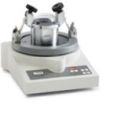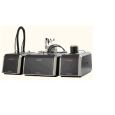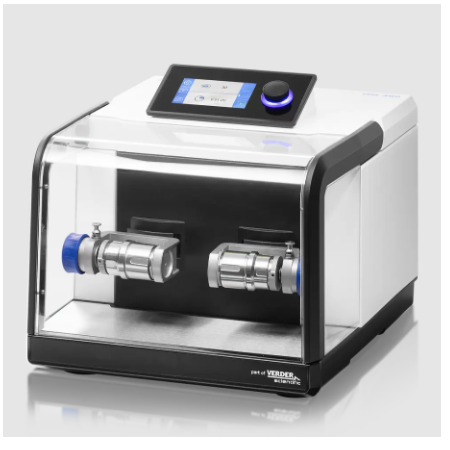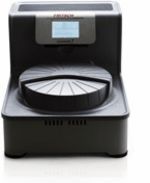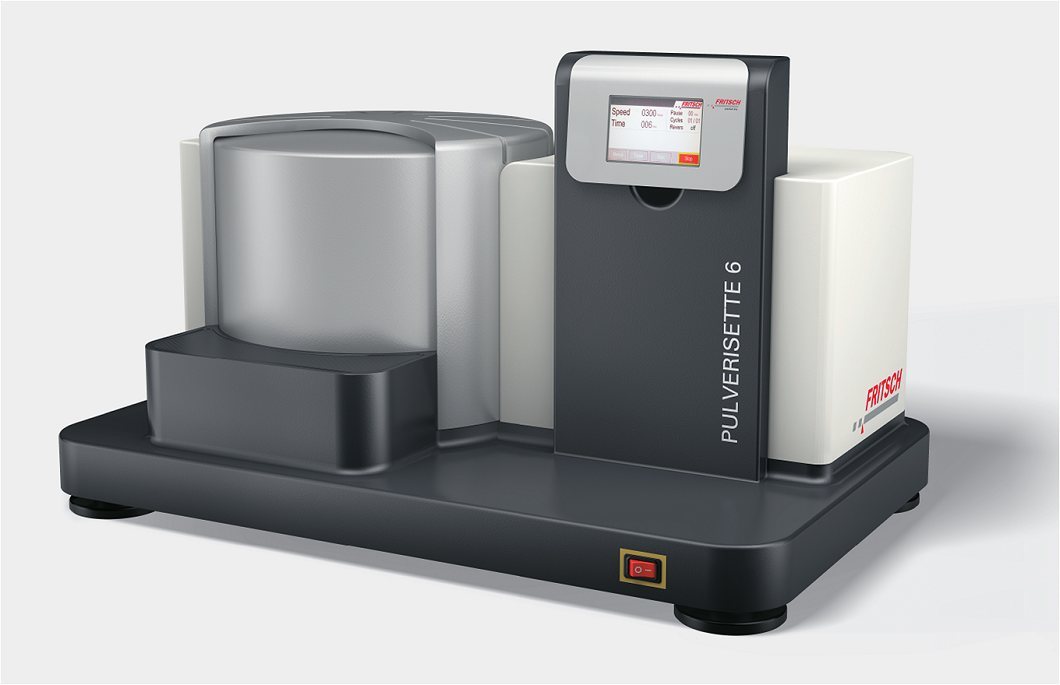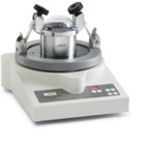
方案详情
文
甲醛 (HCHO) 是动物、植物及人体组织的自然组成部分,它是在细胞内通过脱甲基反应和特殊的脱氧化酶形成的。研究表明,坚硬的牙齿组织中甲醛含量的准确测量取决于研磨生物样品量(牙齿组织),选择最佳的提取试剂(双甲酮)的浓度以及提取过程中的技术。
本文通过各种对比实验证明了以上各种因素对甲醛含量测定的影响。
具体的研磨粉碎实验方法及相关实验数据,欢迎您来电话与北京飞驰科学仪器有限公司取得联系。
方案详情

TLC Determination of Formaldehyde in Teeth Aspects of the Exact Quantitative Determination ofFormaldehyde in Tooth Tissue by TLC Ryszard Siembida, T. Katarzyna Rozylo*, and Anna Jamrozek-Manko Formaldehyde (HCHO) is a natural component of plant, animal,and human tissue. It has been proved that it is formed within cellsby demethylation and methylation via demethylases and specialperoxidases. Fundamental research work studying the role offormaldehyde in plants has been performed by Tyihdk and cowork-ers. Current research concentrates on investigation of physiologi-cal processes in human cells. On the basis of Tyihdk’s work it wasdecided to investigate the physiological and pathological role offormaldehyde in human tooth tissue. It was, however, shown that accurate determination of the levels offormaldehyde in the hard tissue of teeth is influenced by such fac-tors as the amount of pulverization of the biological material stud-ied, choice of the optimum concentration of extraction reagent (e.g.dimedone), and the technique and duration of extraction. To determine the influence of these factors on the precision ofHCHO analysis several trials have been performed with biologicalmaterial characterized by different extents of pulverization.Relationships were determined between the results obtained andthe size of the particles. Adsorption TLC was used to study therelationship between HCHO recovery from the hard tissue of teethand the concentration of dimedone used to extract the formalde-hyde. It was proved that in the TLC determination of HCHO the analyt-ical results were influenced by many factors. 1 introduction Numerous studies have shown that the level of formalde-hyde in plant, animal, and human tissues (in body fluids) is ( R. Siembida and A. Jamrozek-Manko,Maria Curie-Sktodowska University,Faculty of Chemistry, Lublin, Poland, and T.K. Rozyto, Medical University ofLublin, Department of Dentistry, Lublin, Poland. ) This paper was presentedat the 10* International Symposium onInstrumental Planar Chromatography,Visegrad, Hungary,May 16-19, 1988 related to the physiological state of the organisms. InPHyrecognition of the intracellular occurrence of HCHOdescribed by Tyihdk [1,2] in numerous papers on plant tis-sues, it was decided to investigate the influence of the phys-iological state of teeth on the level of formaldehyde intooth tissue. During our preliminary work in this field it was found thatthe results obtained from the analysis of formaldehyde lev-els in the hard tissue of teeth (several tens of micrograms)is influenced by such factors as the amount of pulverizationof the biological material studied, selection of the optimumconcentration of extraction reagent (dimedone), and thetechnique and duration of the extraction process. In our numerous papers in the field of HCHO determina-tion in biological material (hard tissue of teeth) [3-8] andin Tyihak’s work it was concluded that the accuracy ofthese determinations can be considerably increased byselection of a suitable concentration of the dimedone usedto extract HCHO and by appropriate preparation of thesample for chromatographic analysis. Because these ana-lytical guidelines have so far been approximate only (i.e.qualitative), it was resolved to study this problem verythoroughly. The level of formaldehyde in the hard tissues of teeth is usu-ally determined in the form of formaldemethone (a dime-done adduct of formaldehyde). The reaction between dime-done and formaldehyde is: The accuracy of quantitative determination of this adduct isinfluenced by several factors of apparently considerableimportance. Figure 1 Schematlc representation of the method used for the determination of formalde-hyde. Figure 2Particle-size distribution after 20 min mllling. 2 Experimental The analysis of HCHO in hard tissues of teeth can be rep-resented by the scheme shown in Figure 1. 2.1 Pulverization of Teeth The teeth analyzed must be thoroughly cleaned of remnantsof soft tissue, blood, and, when present, dental fillings. Thisis very important because the level of HCHO in the hard tis-sue of teeth is one twelfth that in soft tissues. The presenceof fillings would make it impossible to pulverize the toothhomogeneously. The teeth were pulverized in a Pulverisette 0 vibrating mill(Fritsch, Germany) with an agate mortar. After preliminarypulverization to approximately 0.5-1 mm, eight separatesamples (0.6 g) were further milled in the vibrating mill for5,10,20,30,40,60,90, 120, or 240 min. The influence of theparticle-size distribution of the analyzed material was stud-ied by means of an Analysette 22 laser analyzer (Fritsch,Germany). Figures 2-4, respectively, and Table 1 show theparticle-size distributions obtained for samples pulverizedfor 20, 40, and 120 min. It is clearly apparent that increasingthe duration of pulverization reduces the percentage of the Figure 3 Partlcle-size distribution after 40 min milling. Figure 4 Particle size distribution after 120 min milling. largest-sized particles. The results obtained enabled choiceof the optimum amplitude of mortar vibrations (1.5 mm inthe range 0-3 mm) and the optimum duration of pulveriza-tion - 120 min. Preparation of samples in this mannerensures optimum extraction of HCHO for TLC analysis. 2.2HCHO Extraction A methanol solution of dimedone was used to extract HCHOfrom the pulverized teeth. Samples (0.25 g) were extractedwith solutions (400pL) containing 0.050, 0.100, 0.250, 0.500,0.750,1.00, 1.500, 2.500, or 3.00 mg/mLdimedone. Figure 5 shows the relationship between the level offormaldemethone determined in the extract and in the ini-tial concentration of the extractant. It is evident that thelevel of formaldemethone increases at first sharply and laterslowly as the concentration of dimedone is increased. Aswell as increasing the amount of formaldemethoneobtained, increasing the amount of dimedone also increas-es the amount of the so-called ‘blind sample’(solution ofpure extractant), which causes overloading of a TLC plate.The results obtained enabled determination of the optimumconcentration - 1.00 mg mL-- of the solution used forextraction. 20 min 40 min 120 min 54.56% > 10.00 pm 56.47% > 10.00 pm 44.15% > 10.00 um 39.02% > 20.00 pm 40.32% > 20.00 pm 27.51% > 20.00 um 20.62% > 50.00 pm 16.08% > 50.00 p.m 4.38% > 50.00 um 16.30% > 80.00 um 6.78% > 80.00 um 0.97% > 80.00 pm 6.98% > 120.00 u.m 1.12% >120.00 um 0.06% > 120.00 pm 0% >150.00 um 0.20% >150.00 um 0.00% > 150.00 pm 0% > 180 um 5.00% < 0.93 um 5.00% < 1.01 pum 5.00% < 0.84 pm 10.00% < 1.38 um 10.00% <1.58,j pm 10.00% < 1.21 um 15.00% <1.88 pm 15.00% < 2.27 um 15.00% <1.60 pm 20.00% <2.50 pm 20.00% <3.09 um 20.00% <2.04 pm 25.00% <3.31 pm 25.00% < 4.07 pm 25.00% <2.56 pm 30.00% < 4.37 pm 30.00% < 5.23 um 30.00% <3.17 um 40.00% <7.49 pm 40.00% < 8.44 pm 40.00% <4.85uum 45.00% < 9.77 um 45.00% < 10.75 um 45.00% < 6.03jm 50.00% < 12.69 pm 50.00% < 13.61 pm 50.00% <7.58 um 55.00% <16.03 pm 55.00% < 16.84 um 55.00% < 9.61 pm 60.00% <19.35 um 60.00% <20.22 um 60.00% <12.19 pm 65.00% <22.78 pm 65.00% <23.75 um 65.00% <15.20 pm 70.00% <26.75 um 70.00% <27.74 pm 70.00% < 18.37 pm 75.00% <32.77 p.m 75.00% <32.71 pm 75.00% < 21.68 um 80.00% <55.24 pm 80.00% <40.10 um 80.00% < 25.27 pm 85.00% <86.78 p.m 85.00% < 53.22 um 85.00% <29.50 pm 90.00% <108.75 pm 90.00% < 68.58 pm 90.00% <35.33 pm 95.00% < 127.05um 95.00% <87.95 pm 95.00% < 47.44 pm 2.3Separation of the Extract- Sample Preparation The relationship between the extraction time the amount offormaldemethone obtained from the hard tissue of teethwas also examined. Samples (0.25 g) were extracted for dif-ferent times (5,10, 15, 30,45,60, 90,120, 180, or 240 min)with a solution of dimedone in methanol (1.000 mg mL-, Figure 5 Relationship between the concentration of the extractant and the level offormaldemethone determined for two different groups of teeth. 400 pL). After extraction the suspension was centrifugedfor 7 min. The dependence on extraction time of the concentrationof formaldemethone determined is presented in Figure 6.It can be concluded that results are improved by increas-ing the extraction time, but that the influence of extrac- 0,120 Figure 6 Relationship between the extraction time and the level of formaldemethonedetermined for two different groups of teeth. Figure 7 Densitograms from chromatograms of tooth extracts obtained by use of differentconcentrations of extractant. tion time decreases the more it is increased. It can beassumed that the optimum extraction time is in the rangeof 60-90 min. 2.4 TLC Analysis of Extracts Application of the HCHO extract (20pL) to the chromato-graphic plates was performed by use of a Desaga AS 30TIS annlicatTLC applicator under pure nitrogen. Because of the highaffinity of HCHO for dimedone it was necessary to mini-mize contact with laboratory environment, which alwayscontains some free HCHO which can bind with dimedone.To determine and eliminate HCHO contamination fromreagents and HCHO derived from the laboratory atmos-phere, the so-called ‘blind sample’ (i.e. pure dimedone solu-tion at the concentration used for extraction) was alsoapplied on the plate. 2.5 Development and Drying of Chromatograms All chromatograms were developed to a distance of 100 mmin Camag twin-trough chambers. Chloroform-dichloro-methane, 1+3 (v/v), was used as mobile phase. The devel-oped chromatograms were dried by standing for 15 min atroom temperature. 2.6 Densitometric Evaluation Densitometric analysis of chromatograms was performedwith a Shimadzu (Japan) CS9001 PC densitometer immedi-ately after drying of the TLC plates. The optimum wave-length was 275 nm. If necessary the chromatograms shouldbe stored in a freezer and without contact with the labora-tory environment. Sample densitograms derived from chromatograms of tooth x n Figure 8 Densitograms from chromatograms of tooth extracts obtained by use of differentextraction times. extracts obtained by use of different concentrations ofextractant and different extraction times are presented inFigures 7 and 8. The procedure described for preparation of samples of bio-logical material for TLC analysis enables accurate determi-nation of HCHO levels despite the small amounts presentin these samples. The procedure could also be used forquantitative TLC determinations of HCHO precursors incell metabolism in biological material. ( References ) ( [1] E. T yihak, J. Balla, G . Gaborjanyi, a n d E. Ba l azs, Ac t aPhytopath. Acad. Sci. Hung. 13 (1978) 29-31. ) ( [2] E. Sárdi and E. Tyihdk, Biomed. Chromatogr. 8 ( 1994)313-314. ) ( [3] T.K. Rozylo and R. Siembida, 6th Conf. Application of Chromatographic Methods in Phytochemical and BiomedicalResearch, Lublin, Poland 1997, Abstracts p. L14. ) ( [4] T.K. Rozyto and R. Siembida, Congress Stress of Life, Stress and Adaptation from Molecules to Man, Budapest, Hungary 1997, Abstracts p. 186. ) ( [5] R. S iembida a n d T. K . Rozylo, Congress Stress of Life, Stressand Adaptation f rom M olecules to M an, Budapest, Hungary1997, Abstracts p . 1 80. ) ( [6] T .K. Rozylo, Chem. Environ. Res. 4 (1995) 129-134. ) ( [7] T.K. Rozyto, Biomed. Chromatogr 12 (1998) 1- 4 . ) ( [8] R. S iembida a n d T.K. Rozyto, Pr o c. 10 t h Int. Sy m p. Instru-mental Planar Chromatography, Visegrad, Hungary, 1998,pp.223-229. ) ( Ms received: June 24, 1998 ) Accepted by SN: July 31, 1998 ournal of Planar ChromatographyVOL. NOVEMBER/DECEMBER ournal of Planar ChromatographyVOL. NOVEMBER/DECEMBER
确定

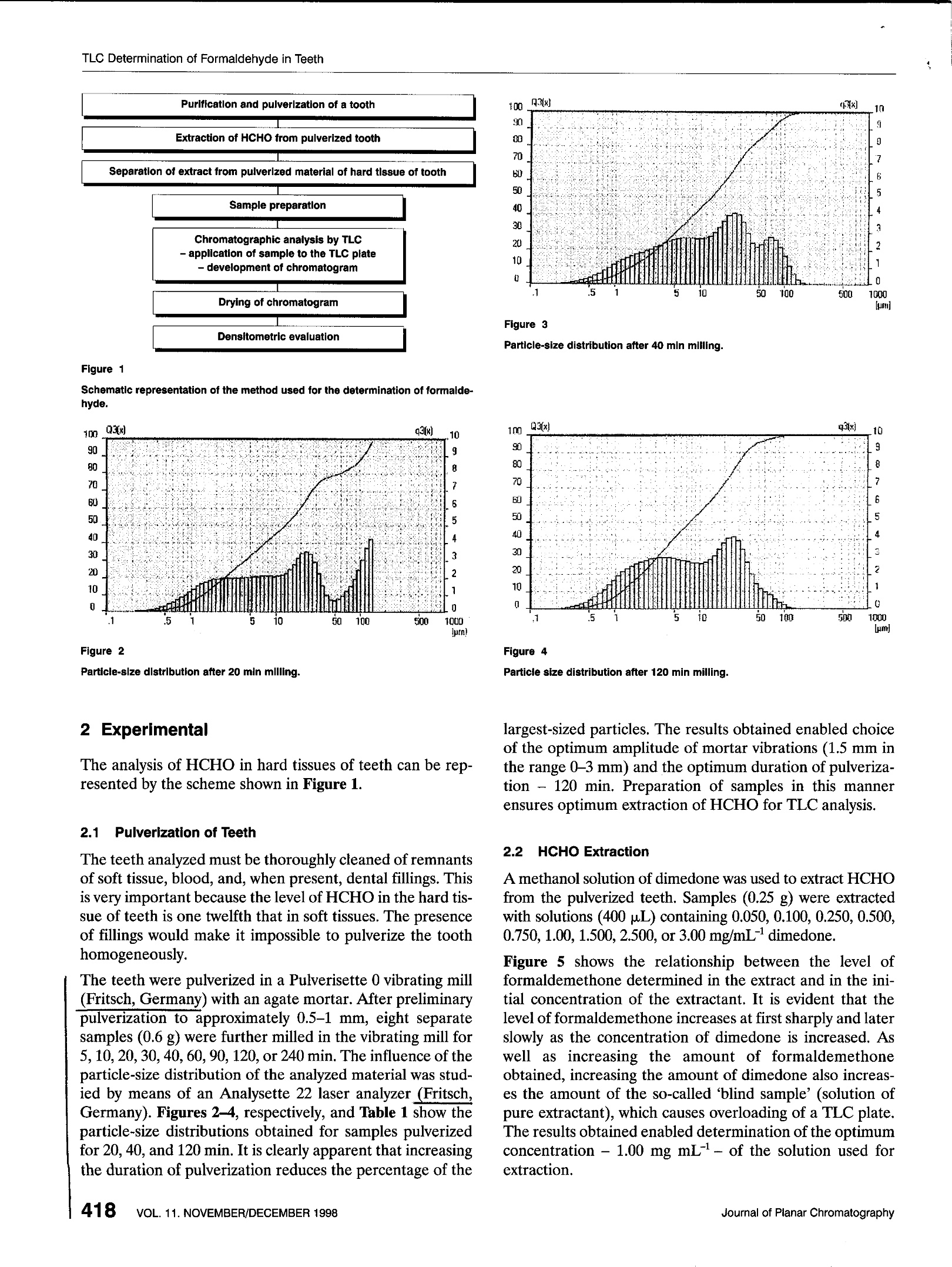
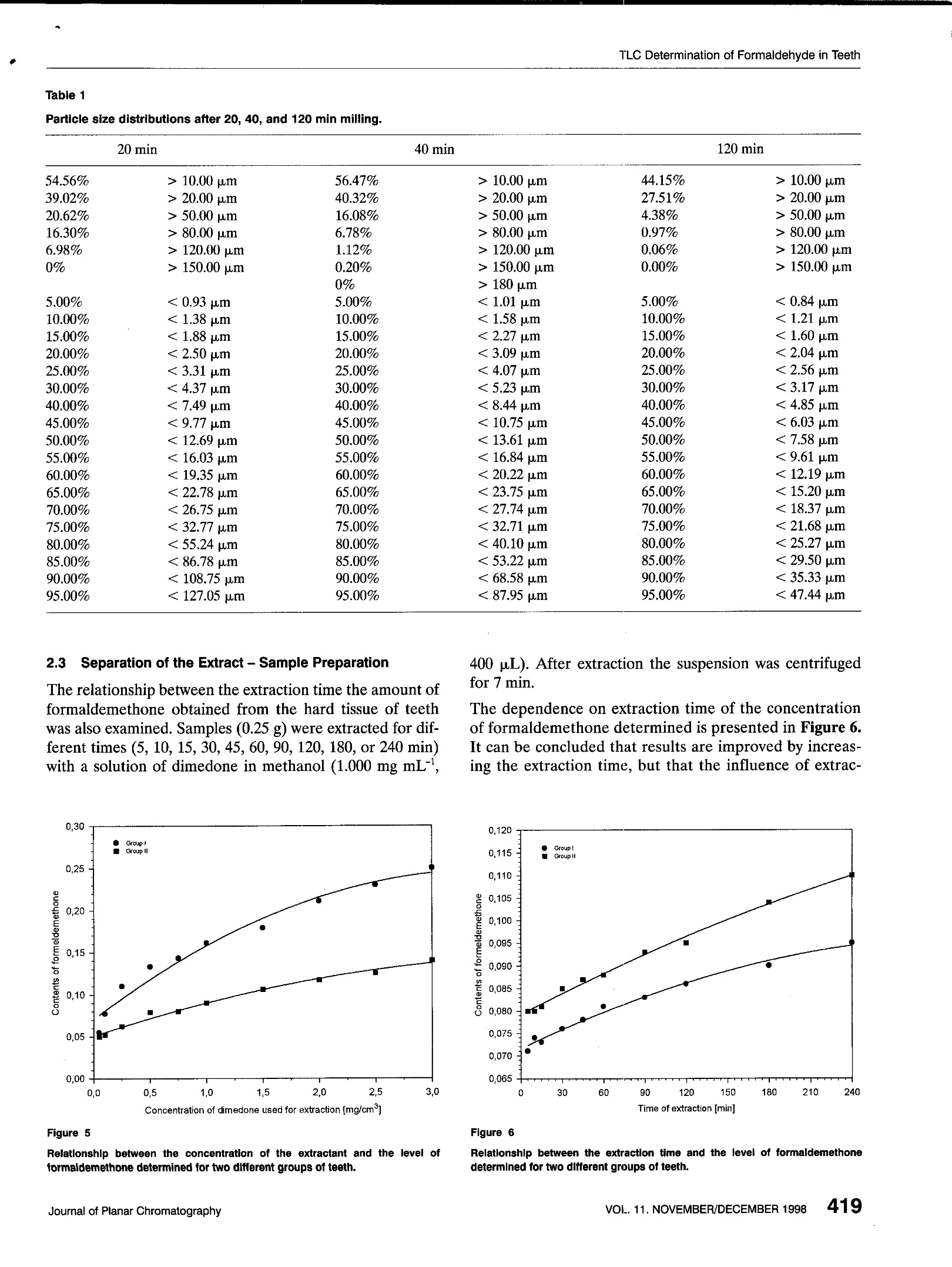
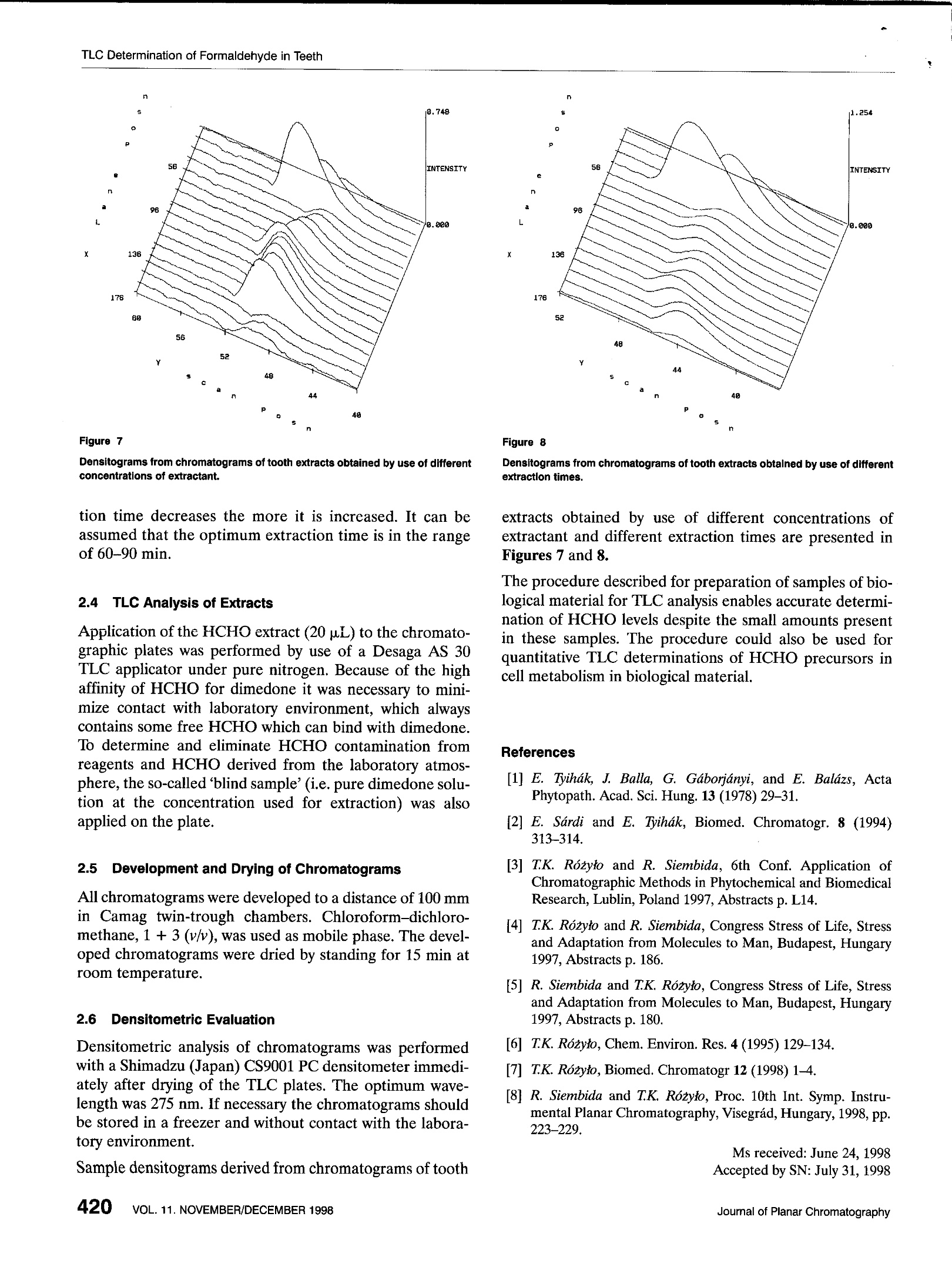
还剩2页未读,是否继续阅读?
北京飞驰科学仪器有限公司为您提供《用薄层色谱测定牙齿组织中甲醛的含量》,该方案主要用于牙齿中--检测,参考标准--,《用薄层色谱测定牙齿组织中甲醛的含量》用到的仪器有德国FRITSCH(飞驰)P0 微型振动研磨机/仪、德国FRITSCH(飞驰)A22大量程纳米激光粒度仪
推荐专场
相关方案
更多









